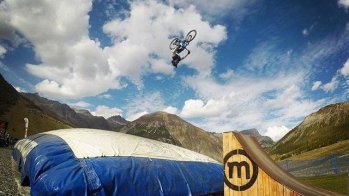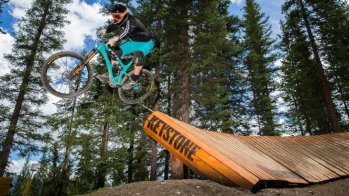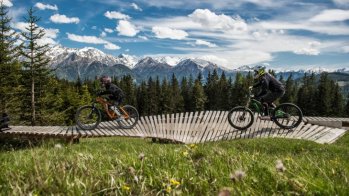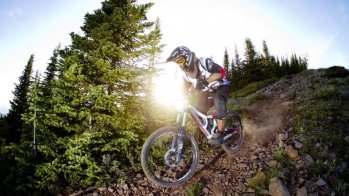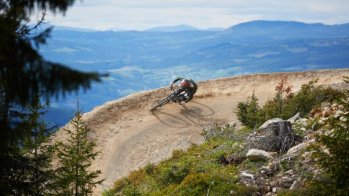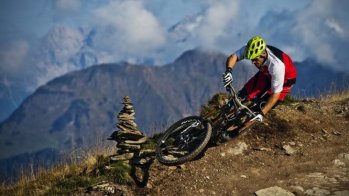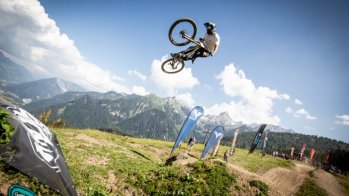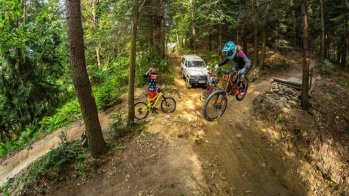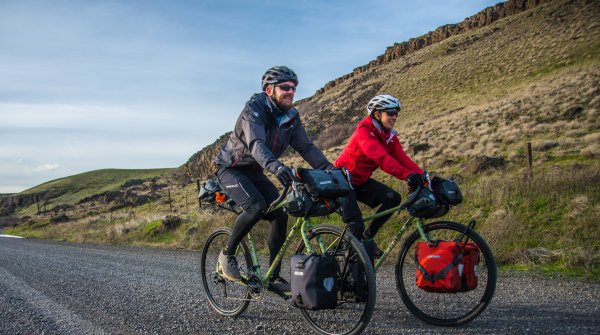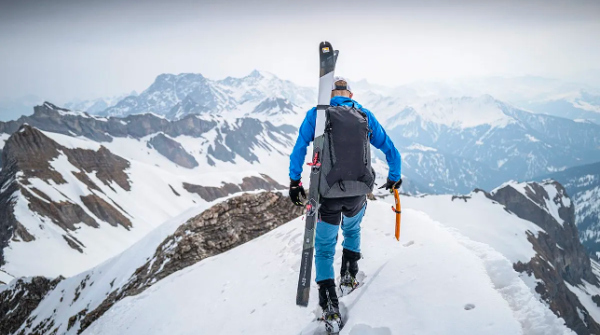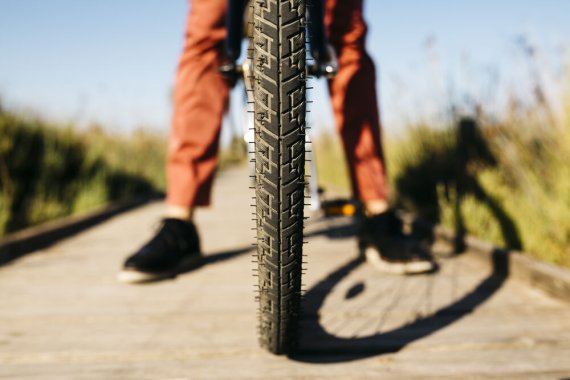
Although at first glance bicycle tyres often seem inconspicuous, they are a component that can completely change the character of a bike. The choice of tyres is accordingly important when putting together a bike. Not every type of tyre is suitable for every purpose. ISPO.com gives an overview of the different tyre types.
For most cyclists, it's more of a trip hazard than a decision: The vast majority of bikes today are built with clincher or folding tyre compatible rims - internally open tyres with a bead on the open edge, which is pressed by the air pressure into the externally overlapping rim edge. A rubber hose with a valve is installed on the inside during assembly and can be replaced. The difference between clincher and folding tyres: If the bead is made of metal, it will sit a little tighter. If it is made of textile, the tyre can be folded up to the size of a jersey pocket.
Despite their name, tubular tyres do not have a replaceable tube. They themselves are the tube, as the carcass is sewn to the closed system on the tyre side. These tyres are glued onto a rim with a flat rim profile. That's why they sit firmly on the rim when driving with very little pressure or when you have a breakdown. These tyres are still often used in cyclocross and power cycling.
Tubeless tyres look very similar to clincher tyres, but the rims must be "tubeless ready", especially the valve must be screwed into the rim. Advantage: They are slightly more flexible, means with a lot of grip in the terrain, but quite complicated to repair and fill.
Airless tyres are not made of solid rubber, but of a polymer similar to that used in modern sports shoes. This makes them even lighter than clincher tyres plus tubing, and different hardnesses simulate air pressures with more comfortable to very light rolling properties. They are mounted on rims for clincher and folding tyres with the help of small crossbars in the tyre. These are clipped with a little force between the rim flanges into the grooves into which a wire bead normally forms.
The most beautiful bike parks in the world in pictures
If you already have a wheel or a set of wheels, the tyre type is usually already specified. Tubular tyres are not compatible with any other type. A tubeless tyre can only be mounted on a suitable, prepared rim. However, such a "tubeless ready" rim can be temporarily repaired with a bicycle tube after a damage on the way, for example.
Clincher, folding and "airless" tyres are interchangeable as long as the size fits.
But which tyre is suitable for what or whom?
Clincher tyres are usually cheap, even at medium pressure they still sit well on the rim, but are a bit heavier. They are mainly used for everyday bikes and for less sporty riding.
An estimated three-quarters of all current new bikes use such a rim-tyre combination. The rigid metal inserts in the tyre sometimes make levering up a tyre a bit strenuous.
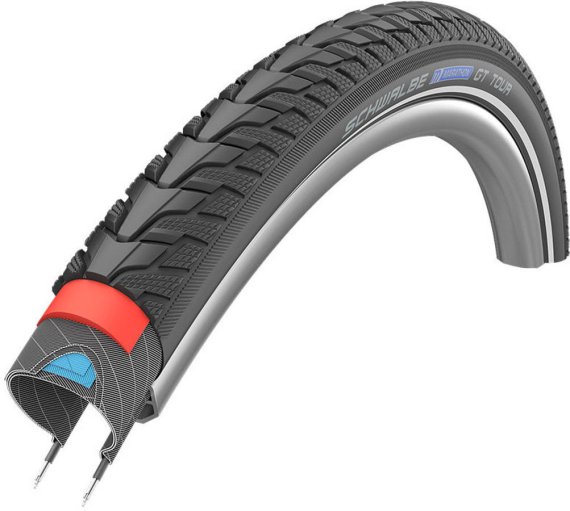
Folding tyres are lighter. Despite only a few grams, this is particularly noticeable in the fast rotating circular path around the hub during acceleration. In addition, touring cyclists, for example, can store a spare jacket much better in their luggage, since the tyre can be bent several times.
With little air pressure, the tyre will fall off the rim more quickly than others when changing direction quickly, so it is more likely to be available in sporty versions.
In former times the straight gluing of tubular tyres to the rim was an art and not infrequently a mess. With special double-sided adhesive tape, this is quite easy today. Bonding keeps the tyre in place even in the event of a puncture or with intentionally extremely low pressure in the tyre on the rim. For racing drivers with their high speeds or for off-road use where less pressure means more grip, a huge advantage.
Since the air pressure here does not have to be held by the rim, fillings up to 18 bar are possible. However, a breakdown always means quite high costs.
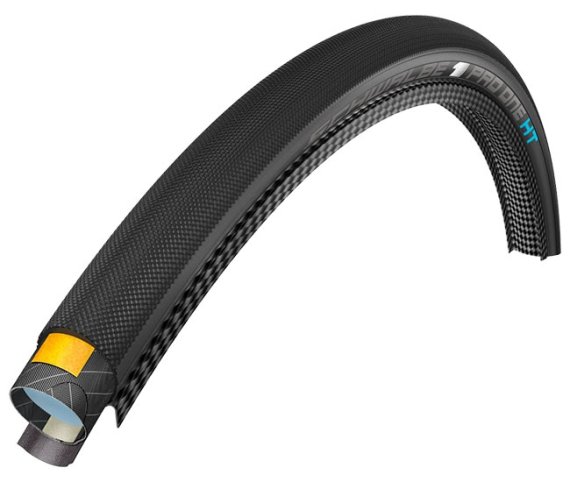
Tubeless cars have been driving for a long time; in the off-road sector, less weight, more comfort and more grip are supposed to be the advantages with bicycles, the latter as with tubular tyres due to less air pressure. In the terrain, the rim can "flatten" up to tyres, so a tube often breaks, but the coat alone can withstand it.
However, the area between the rim and the tyre only holds the air with sealing milk, which has to be filled in very quickly during assembly, preferably with a compressor. The liquid may escape during disassembly. Due to the many disadvantages, tubeless tyres are really only for off-road riders, whether MTB or Gravelbike.
"Airless" tyres are not new, but only current models promise realistically comparable driving characteristics. There are so far few driving reports, the assembly is time-consuming, but to make by everyone and, since breakdowns are not possible, also a good investment.
The main applications are inner-city areas, rental bikes and bikes for long journeys, virtually everywhere where puncture protection is the top priority, whereby the rolling and damping properties, according to the manufacturer, should be close to those of tyres.
As far as wear and tight fit are concerned, even during very fast manoeuvres, there are still no statements except from the manufacturer's own team. The tyres cost about twice as much as a pneumatic tyre with medium puncture protection.
- Awards
- Mountain sports
- Bike
- Fitness
- Health
- ISPO Munich
- Running
- Brands
- Sustainability
- Olympia
- OutDoor
- Promotion
- Sports Business
- Textrends
- Triathlon
- Water sports
- Winter sports
- eSports
- SportsTech
- OutDoor by ISPO
- Heroes
- Transformation
- Sport Fashion
- Urban Culture
- Challenges of a CEO
- Trade fairs
- Sports
- Find the Balance
- Product reviews
- Newsletter Exclusive Area
- Magazine


